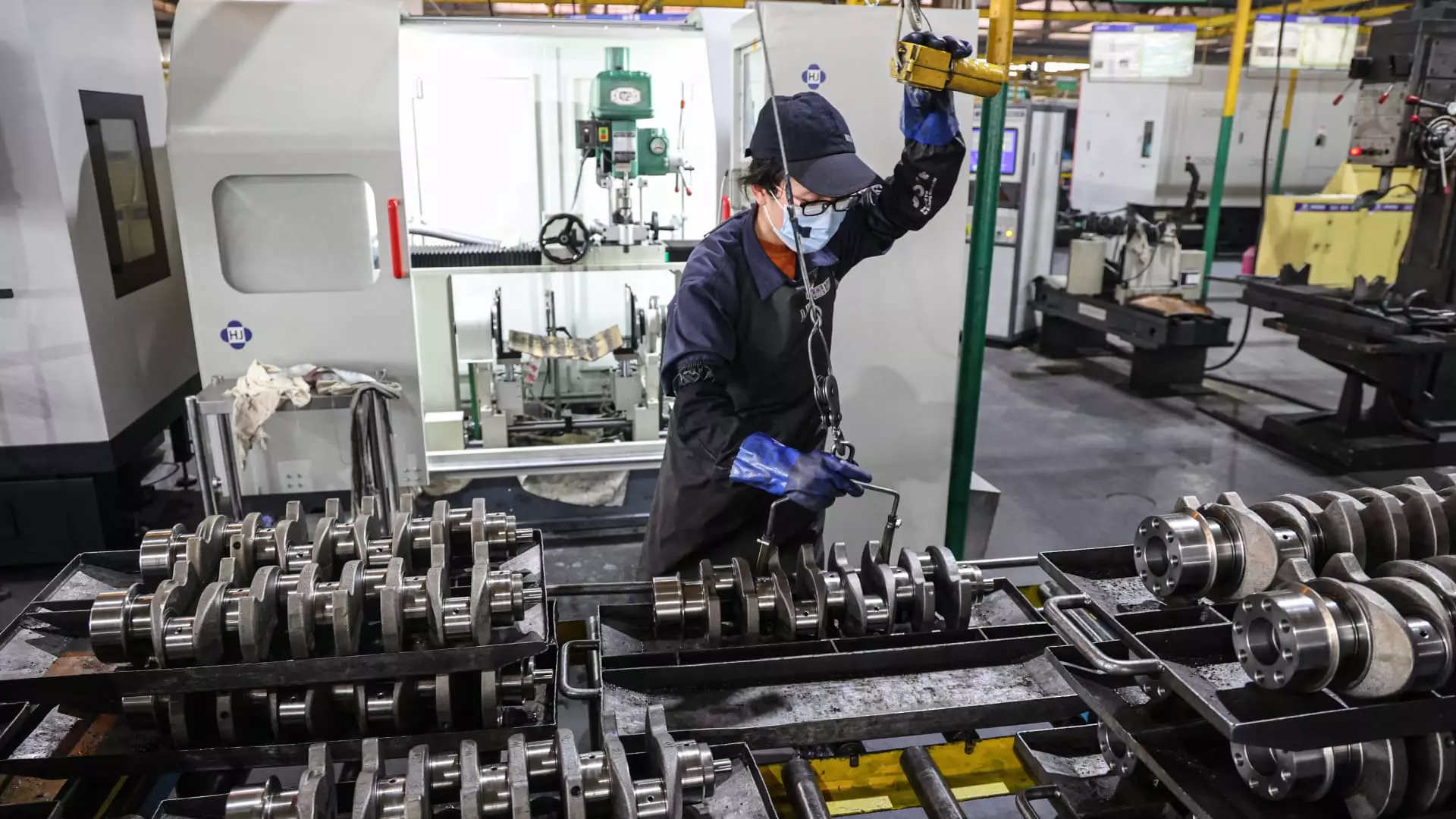In an intriguing turn of events, China’s industrial profits have surged for two consecutive months, defying the heavy burdens laid down by an aggressive tariff regime imposed by the U.S. The official statistics presented a cautiously optimistic tableau: a 3% increase in cumulative profits for major industrial players in April compared to the same month the previous year. It’s a pronounced acceleration from the 2.6% growth witnessed in March. However, to gaze solely at the numbers is to miss the broader narrative—a tale of resilience marred by the specters of deflation and external economic pressures.
As we dissect these figures, it is crucial to acknowledge that the cumulative profitability from January to April rose only 1.4% year-on-year. This tepid growth paints a picture of a sector grappling with insistent headwinds. The notable disparities between state-owned enterprises and their private and foreign counterparts raise significant questions. While profits for private and foreign-invested firms nudged upward by 4.3% and 2.5%, respectively, state-owned enterprises bucked the trend with a sobering 4.4% decline. It raises eyebrows: Is the supposed resilience of China’s industrial fabric bulwarked solely by the private sector’s agility and innovation?
Tariffs: A Double-Edged Sword
The geopolitical skirmish between the U.S. and China has, in recent months, escalated into something resembling a trade cold war, with tariffs acting as the weapons of choice. The Trump administration’s shocking introduction of a 145% tariff on Chinese imports last month was a harsh reality check to an already strained trading environment. Both nations responded with a series of retaliatory measures, creating a convoluted tangle of economic policies that resemble a mutual trade embargo. Yet, rather than decimating Chinese exports, these tariffs seem to have propelled domestic firms to pivot and find alternative markets, showcasing an adaptability that defies analysts’ expectations.
However, let’s not dismiss the substantial impact these tariffs have had on the underlying sentiments within China’s industrial landscape. The recent agreement to reduce tariffs signifies a tentative thawing in relations, but it also indicates an uncertain future. One can’t help but wonder: have these tariffs merely led to a temporary band-aid solution rather than addressing the deeper structural issues affecting both economies?
The Shadow of Economic Imbalance
While the growth in industrial output—6.1% in April—is a bright spot, the simultaneous slowing of retail sales growth to 5.1% indicates a troubling imbalance in the broader economy. It raises critical questions about the sustainability of this growth: Are we witnessing the swelling of industrial profits while consumer sentiment languishes? Weining Yu, a statistician at the National Bureau of Statistics, aptly pointed out the lingering challenges tied to insufficient demand and declining prices. The ghost of deflation still haunts the economy, suggesting that the gains observed might be as superficial as they are fleeting.
Moreover, the significant decrease in profits within the mining sector—down 26.8% year-on-year—signals that not all industrial segments are enjoying the same fortune. If industrial success is unevenly distributed, can we genuinely call this a period of rejuvenation?
The Role of High-Tech and Innovation
The bright beacon among these clouds, however, lies in the high-tech manufacturing sector. With profits climbing 9% year-on-year, industries like biopharmaceuticals and aircraft manufacturing provide a glimpse into a future driven by innovation and modernization. The household appliances sector has similarly benefited from a consumer trade-in scheme, with profits soaring over 15%. This focus on upgrading consumer goods is a vital component of sustainable growth—fostering a culture of consumption that could revitalize the dwindling retail figures.
But herein lies a double-edged sword: while these sectors bask in growth, they also highlight the vulnerabilities of traditional industries. The profits of major industrial firms may seem promising, but this broad-stroke success risks masking the plight of sectors left behind in the dust.
In a world increasingly defined by interdependence, China’s economic narrative suggests a complex interplay of resilience and fragility. The figures tell one story, but the profound layers beneath them speak of a future that hangs in the balance, teetering on the precipice of innovation and the unpredictable tides of international relations.

